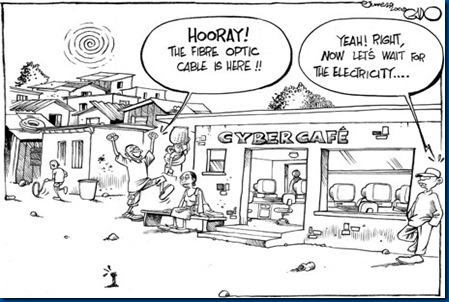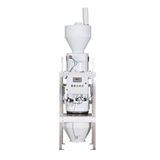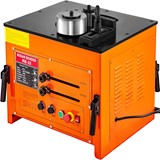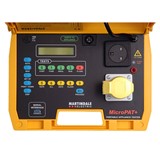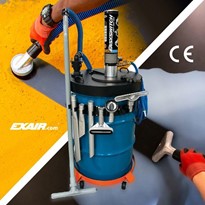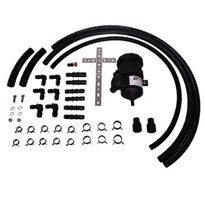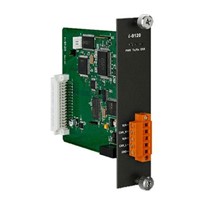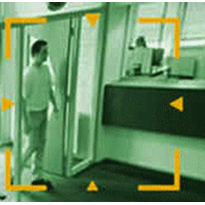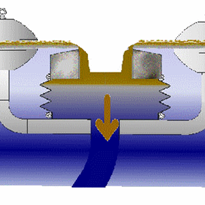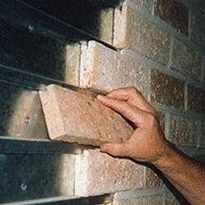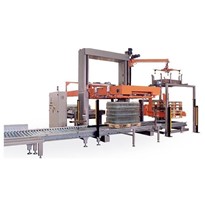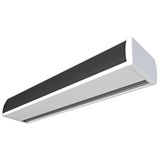It depends on several things:
- The individual product
- How the product is configured (eg type and power of the laser, type of photodiode)
- The type of fiber: multimode or singlemode
- The quality of the fiber.
The simplest constraint on transmission distance is the loss budget: in the most basic case you simply divide the difference between transmit power and receiver sensitivity by the fiber loss per kilometer at the system’s operating wavelength and that is your answer. For example, an OSD139 RS232 modem couples at least -25dBm at a wavelength of 850nm into 62.5/125um multimode fiber and the distant OSD139′s receiver will have a minimum sensitivity of -47dBm.
The loss budget is the difference, ie 22dB, which when divided by the worst case fiber loss of 3.5dB/km suggests the system will operate over at least 6.3km. The singlemode version of the OSD139 also has a loss budget of 22dB but at a wavelength of 1310nm (where the fiber loss is less than 0.4dB/km) so it can operate over at least 50km.
Any sensible design will also take into account any connectors and splices along the way (eg at patchpanels) as well as allow for a link margin that is chosen partly because of intrinsic mechanisms such as degradation of optical output with time and temperature and partly because of site conditions. Typically, such margins can vary between 3dB and 6dB.
In some extreme situations OSD has even allowed for as much as 10dB when it was feared that the optical cable would get damaged fairly regularly so that the splices needed for the repairs would slowly eat away at the margin.
However, transmission limitations caused by fiber bandwidth issues are often a far more critical issue and generally do not seem to be well understood by many users. It is useful to review these issues separately for multimode and singlemode fibers as the mechanisms are quite different.
Before we start, it is probably worthwhile to briefly review the term “bandwidth”.
The bandwidth of a communications medium (like fiber or copper cable) is the range of frequencies that can be transmitted through it. A typical telephone call requires about 3000 Hertz (3kHz) in order to transmit the most important freqencies in human speech. If you want high quality you will extend this to cover all frequencies human hearing can handle, ie to about 20kHz.
And if this is to be extended so that television images can be included as well then this is increased to about 5 or 6MHz. Older fiber optic systems transmit audio and video in a simple “Amplitude Modulation” (AM) format which only needs this base bandwidth.
However, nowadays almost all modern communications are digital in nature and this can dramatically increase the bandwidth requirements. For example, it is quite common to digitally encode and transmit video signals at speeds of up to 400Mbps for standard definition television (a lot more for High Definition). Such a data rate requires a transmission channel that has a bandwidth of at least 250MHz.
And, despite what many people think and as indicated above, optical fibers do actually have bandwidth limitations.
Multimode fiber bandwidth
Multimode fibers are so-named because they allow many ray paths of light to travel through their core region, something like several hundred distinct paths (or “modes”) in a typical 62.5/125 multimode fiber and the time light takes to travel along all these ray paths will vary slightly with each path (see figure 1 below). These slight propagation delay variations are equivalent to a reduction in the fiber’s transmission bandwidth.
A good multimode fiber optimised for operation at 1300nm might have a dispersion of 0.3 to 0.8ns over 1km which very roughly corresponds to an achievable system bandwidth of from 1GHz to 400MHz. While 400MHz can theoretically support as many as 80 AM video channels it would only be enough for just a few uncompressed digital channels.
Unfortunately, the fiber dispersion increases with increasing distance. A worst case assumption would be that it increases linearly with distance but in practice it increases roughly to the 0.75 power of distance or, put another way, the bandwidth reduces to the 0.75 power of distance. So our example multimode fiber might be 400MHz over 1km but would reduce to about 120MHz over 5km: not all that useful for many high data rate applications such as uncompressed digital video.

There are many other related issues that affect the usable capacity of a multimode fiber but this simple example does illustrate a stark reality of modern uncompressed digital systems: they are really quite limited when it comes to multimode fiber.
Of course, when a video codec is used to encode the video using a compression standard such as MPEG4, MJPEG2000, H.264 or several other techniques the transmission bandwidth is reduced dramatically to anything from less than 100kbps (slow frame rates and/or poor quality) to greater than 10Mbps (standard frame rates and high quality image) so such systems which typically use an Ethernet network to transport them between source and user(s) are really only affected if the Ethernet network itself suffers from some sort of congestion.
Singlemode fiber bandwidth
All fiber types are affected by bandwidth limitations caused by the interaction between the transmitting device (Light Emitting Diode (LED) or one of two main types of laser) and the material used in the fiber.
The speed of light within a material depends on both the refractive index and the actual wavelength being transmitted. Optical devices actually transmit a narrow range of wavelengths and it is this range of wavelengths (or spectral width) which results in this “chromatic dispersion” (see figure 2 below) and this ranges from <3ps/nm of spectral width/km at 1310nm to 17ps/nm of spectral width/km at 1550nm.
While this can be a major problem in higher speed multimode systems it is the main bandwidth limitation in singlemode systems (there is also a minor limitation called waveguide dispersion which can actually cancel chromatic dispersion at just one specific wavelength).
If the laser used to transmit the signal was a perfect single frequency then it would have an extremely high bandwidth distance product allowing transmission of data rates in excess of 10Gbps over hundreds of kilometers at any wavelength.
However, as noted above, commercially available devices are not so perfect and actually transmit energy over a narrow range of wavelengths. For example, LEDs mostly used in multimode systems can have from 20nm to 100nm, the low cost lasers typically used in short distance systems are usually the Fabry Perot (FP) type and have a lasing spectrum of 2 to 5nm whereas the higher performance Distributed Feedback (DFB) types used in telecommunications and other long distance systems will normally have a spectrum from 0.02 to 0.1nm. Guess which is the most expensive!

To illustrate what is achievable with a typical high quality digital product let’s look at the OSD8600 4-channel video multiplexer. This unit transmits at an optical data rate of 900Mbps which means it needs around 500MHz system bandwidth.
Multimode systems using standard FDDI grade fiber will support this to at least 1km. In reality, almost all modern fibers are much better than this and operation over 2km is usually achievable. However, we at OSD are very conservative and would suggest that you not use the product over much more than 1km.
Now look at the same product on singlemode fiber.
If operating with an FP laser at 1310nm the chromatic dispersion induced bandwidth may be as low as 30GHz.km so this will limit operation to 60km. At 1310nm this corresponds to 20 to 24dB of optical loss which is greater than the 15dB available with the OSD8600’s usual optical devices: typically these are good for a loss budget of 15db which corresponds to around 30 to 40km assuming a loss of 0.4dB/km at 1310nm, less if a link margin is included.
On the other hand, at 1550nm the fiber bandwidth with an FP laser will be closer to 4GHz.km which would allow distances of less than 8km. So to take advantage of fiber’s low loss at 1550nm we need to use a DFB laser.
This leads to a bandwidth of about 170GHz.km so we are now fiber bandwidth limited to possibly 300km. Given that our best combination of laser and receiving devices would be good for about 37dB at 1550nm we can see that our maximum achievable distance is closer to 180km, assuming a loss of 0.2dB/km at 1550nm.
While none of this is rocket science it is commonsense for anyone looking at doing anything out of the ordinary to be aware of the fundamental limitations of fibers and of some of the techniques used by companies like OSD to fully exploit the technology.
Please don’t hesitate to contact OSD’s system engineers for any further information or for any assistance in estimating. how far can you go.


